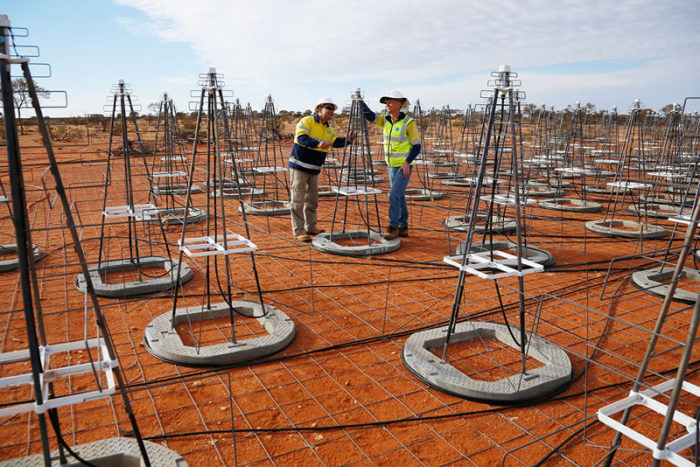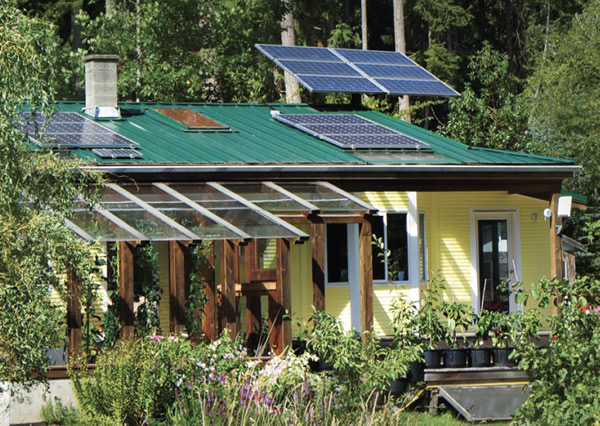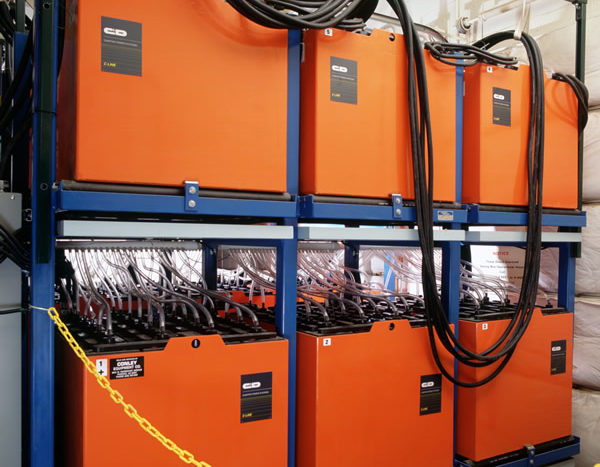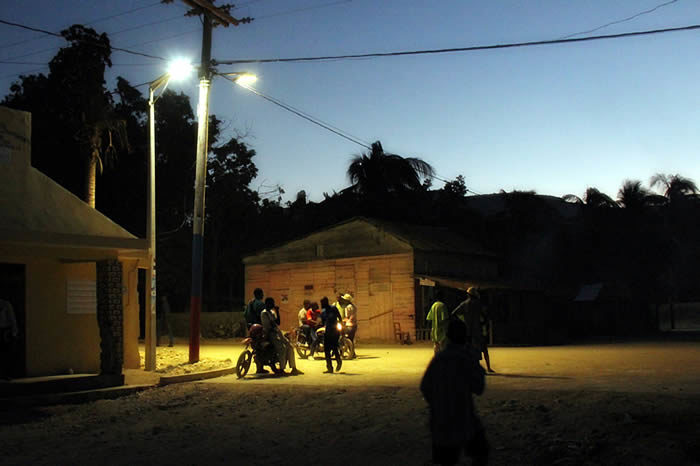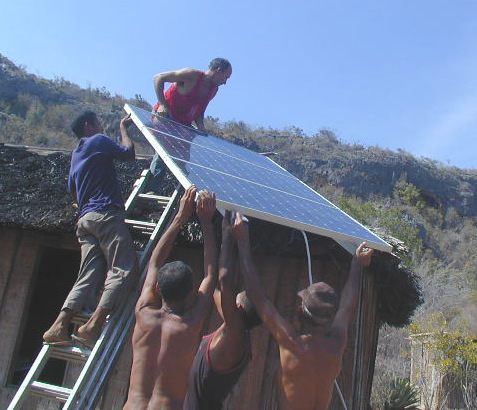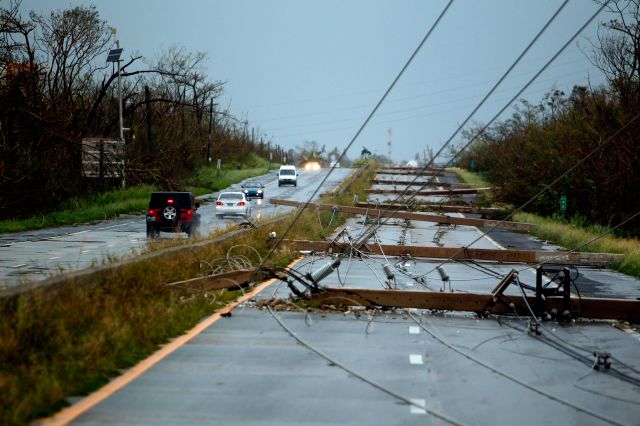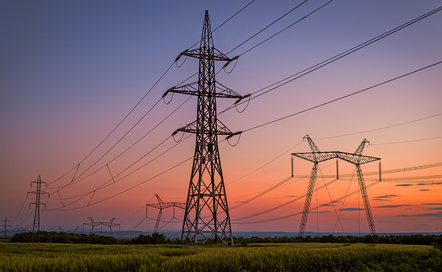HOMER Pro, the microgrid optimization platform, has been playing an important role in deploying one of the most ambitious science projects ever conceived: The Square Kilometer Array (SKA). […]
BLOG
2018 Trends that Will Impact Microgrid Development: Part Two
Last week we reported on important trends that are likely to affect the development of hybrid renewable energy systems in 2018, particularly work that is being done on the modeling, design and implementation of microgrids…This week we bring you the second installment of interesting trends to look for:
Discover AES® – Lithium Iron Phosphate Batteries (LiFeP04 ) are transforming residential energy storage
This article is part of an occasional series that provides industry background and in-depth focus on the components that are available in HOMERⓇ Pro. What are the specifications […]
HOMER Grid “Demand Charge Reducer” for C & I Electricity Customers
The continuing decline in prices for energy storage and solar is creating huge opportunities for large electricity consumers. The need to reduce utility demand charges is a key […]
2018 Trends That Will Impact Microgrid Development: Part One
Is it just our imagination or is the energy world, which seems to have been relatively predictable until we passed the millennium mark, now changing at breakneck speed? […]
Pioneering Remote Microgrids in Alaska
With its extreme weather conditions and isolated off-grid communities, Alaska is the American microgrid “frontier.” Over 200 remotely powered Alaskan villages are not connected to power grids. They […]
Sigora Microgrid Provides Affordable, 24/7 Power to Haiti’s Impoverished Communities
How is it that the poorest country in Western Hemisphere is home to one of the world’s most sophisticated microgrid projects? Maybe fate has determined that the embattled […]
HOMER Energy Explores Microgrid and Renewable Energy Solutions for Puerto Rico
Close to three months after Hurricane Maria swept across Puerto Rico, utterly destroying the island’s electrical grid – as well as countless homes and communities – much of […]
ABB Joins HOMER Energy Component Partner Program
ABB Components Now Available In HOMERⓇ Pro Based on its new partnership with HOMER Energy, ABB components will now be available for modeling in the HOMER Pro software. […]
New HOMER® Pro Release Features Integration with Popular Solar PV Design Tools
The latest release of HOMERⓇ Pro – version 3.11 – is now integrated with two powerful tools for designing PV systems, HelioScope and PVsyst. This development is exciting […]
POWER-GEN International Workshop to feature HOMER Energy VP Business Development
HOMER Energy VP of Business Development Andy Kruse will be giving a presentation on the role and importance of diesel generators in the growth of the microgrid market […]
VII Annual Workshop Cubafotovoltaica
HOMER Energy Support Manager Aleph Baumbach will be making a presentation at Cuba’s VII International Workshop Cubafotovoltaica. The workshop will be held from December 5-8, and is hosted […]
HOMER CEO Peter Lilienthal Presenting at Africa Mini Grid Summit
The fourth annual “Action Learning Event on Upscaling Mini Grids for Low Cost and Timely Access to Electricity” in Nigeria is designed to facilitate investments in the sector […]
Discover Battery Joins HOMER Energy’s Component Partner Program
Discover Battery — which provides reliable, affordable storage systems for residential solar, community electrification, supplementation of unreliable utility power, and as backup to the grid — has joined HOMER® Energy‘s Partner Program, […]
Hybrid Storage Systems to Power-Charge Energy Storage Growth
Which markets are best suited for battery storage and storage hybrids? Which regulations and incentives support or impede the implementation of standalone storage and battery hybrids? HOMER Energy’s John Glassmire, Steffi Klawiter, and Dhiwaakar Rajasekaran — along with the Joint Institute for Strategic Energy Analysis (JISEA) — answer these questions and provide key storage hybrid market insights in a groundbreaking new white paper.
Comet ME’s Jubbet a-Dhib Microgrid — a HOMER Pro Case Study [UPDATED with Confiscation & Return, Reinstallation News]
Ice Cream, Appliances, and Autonomy: Rural Electrification Project Lights West Bank Village (Read about a tragic update followed by positive outcome for Jubbet a-Dhib microgrid in updates below […]
SparkMeter Joins HOMER Energy’s Industry Partner Program
SparkMeter, developer of a low-cost, pre-pay-enabled smart-metering solution for electric utilities in developing countries, has joined HOMER Energy‘s Industry Partner Program, reaffirming the organization’s commitment to the rapidly growing microgrid market. […]
Microgrid Controller, Components Enhance SolarTAC’s New GridNXT Test Facility
On the HOMER InternationaI Microgrid Conference (HIMC2017) “bonus day,” HOMER Energy invited attendees to tour a number of microgrid-related facilities in the Denver area. I was lucky enough to attend all three tours along with microgrid industry professionals from around the world. The highlight for me was the last tour of the day, a visit to a solar testing facility near Denver International Airport.
Lessons from Irma and Harvey: Time for Transition to Resilient Renewable-Energy Microgrids
Our out-of-date fossil-fuel-based infrastructure is failing a world where climate change is bringing more frequent, more extreme, more intense weather to the planet. And the lesson, if we are smart enough to learn it, is that as long as we’re dependent on fossil fuels, these weather events and other related disasters will wreak long-lasting havoc on human lives, the economy, and on the environment.
NREL: Using Stored Energy for Demand Charge Reduction Brings Significant Savings
The National Renewable Energy Laboratory (NREL) and Clean Energy Group (CEG) released last week a comprehensive public analysis of U.S. demand charges — the tariffs commercial customers pay […]
HOMER Pro 3.10 Compare Economics Webinar – 8/29/17
Economics are a very important part of any hybrid energy system. Learn how to use HOMER Pro’s Compare Economics feature in your models for more accurate results. […]
Move to Distributed, Renewable Power Inevitable, Even in Areas Served by Utilities
New distributed energy technologies and business models bring many unprecedented choices in how we create and distribute power. There are three overarching questions, of course: Is this energy model resilient against power outages and grid failure? Is it socially and environmentally responsible? Does it benefit the bottom line?
We are no longer stuck with grid power that doesn’t provide a definitive “Yes!” answer to all three questions.
HOMER Quickstart Launch Webinar – 7/25/17
The introductory webinar for HOMER’s new, free web-based product, HOMER Quickstart. Learn how to model a small scale renewable energy system in just a few minutes! Try it […]
Leonics Renews HOMER Energy Component Partnership
Leonics, specializing in stand-alone photovoltaic (PV) distributed generation(DG) hybrid microgrid system equipment and design, has renewed its HOMER Energy Component Partnership, reaffirming the organization’s commitment to the rapidly […]
Solar Energy International: Reaching Millions, One Roof at a Time
I recently had an opportunity to visit the on-site training campus of Solar Energy International (SEI), located in Paonia, Colorado, a quaint town of 1500 people in western […]
Arctic Remote Energy Networks Academy (ARENA) Event to Include HOMER Pro Training
The University of Alaska-Fairbanks’ groundbreaking Arctic Remote Energy Networks Academy (ARENA) program has brought together a multinational community of energy representatives from throughout the Arctic region for comprehensive […]
MGN Weekly: Moving Past Lights and Chargers in Developing World; Syrian Microgrids Save Lives
“Light is, of course, great, so is entertainment [like computers and TV],” says Busso von Bismarck, founder, manager, and head of business development at energy storage provider Qinous. “But I think it’s important to go further and allow people to run machines with electricity: milling machines, welding or workshops, water pumping. These are applications which make economic growth possible.”
MGN Weekly — Advancing Africa’s Top Priority: Light and Power …and More Microgrid News — May 18, 2017
Solar microgrids in India’s northern Uttar Pradesh state did little to improve household incomes, encourage business ownership, or reduce the long hours that people spend on daily household work, a new study finds. According to the year-long, randomized survey of nearly 1,300 households in 81 non-electrified rural communities, villagers did buy less kerosene for their lamps, since they could flip on light bulbs at night. But their lives were otherwise unchanged, showing that local officials, energy companies, and NGOs alike need to address other pressing issues — such as underfunded schools or dismal job prospects — before rural electrification can really lift people out of poverty.

